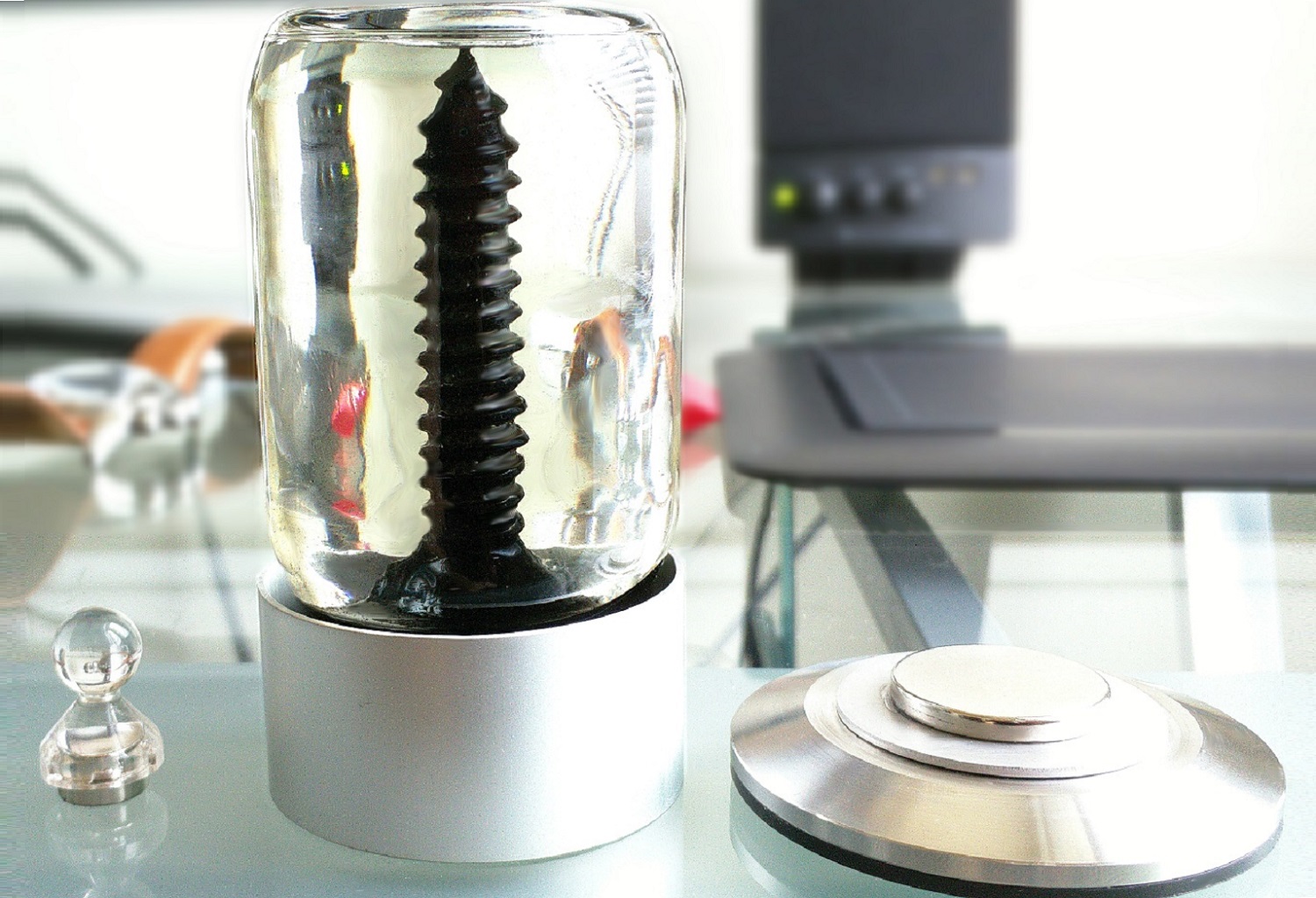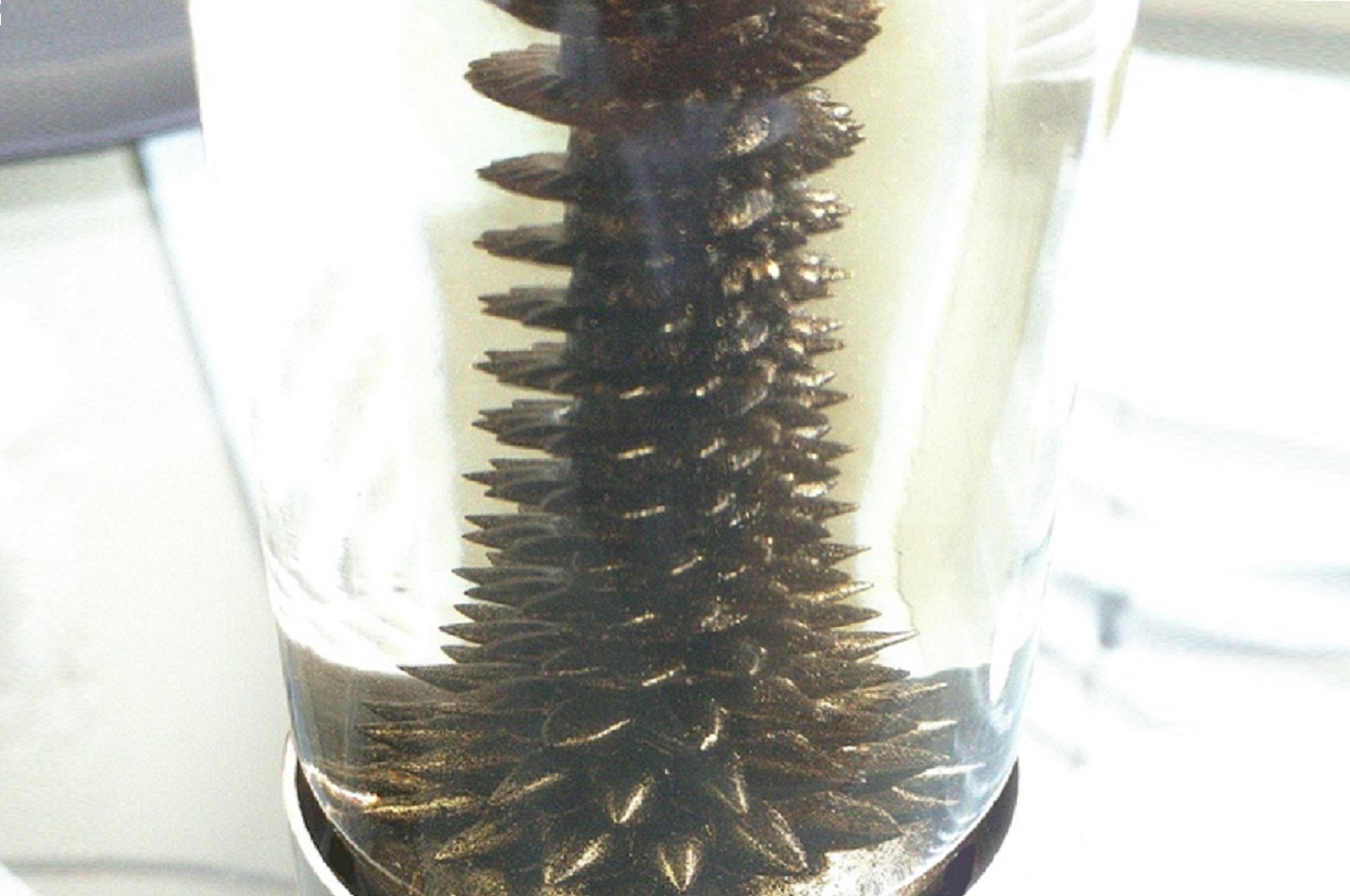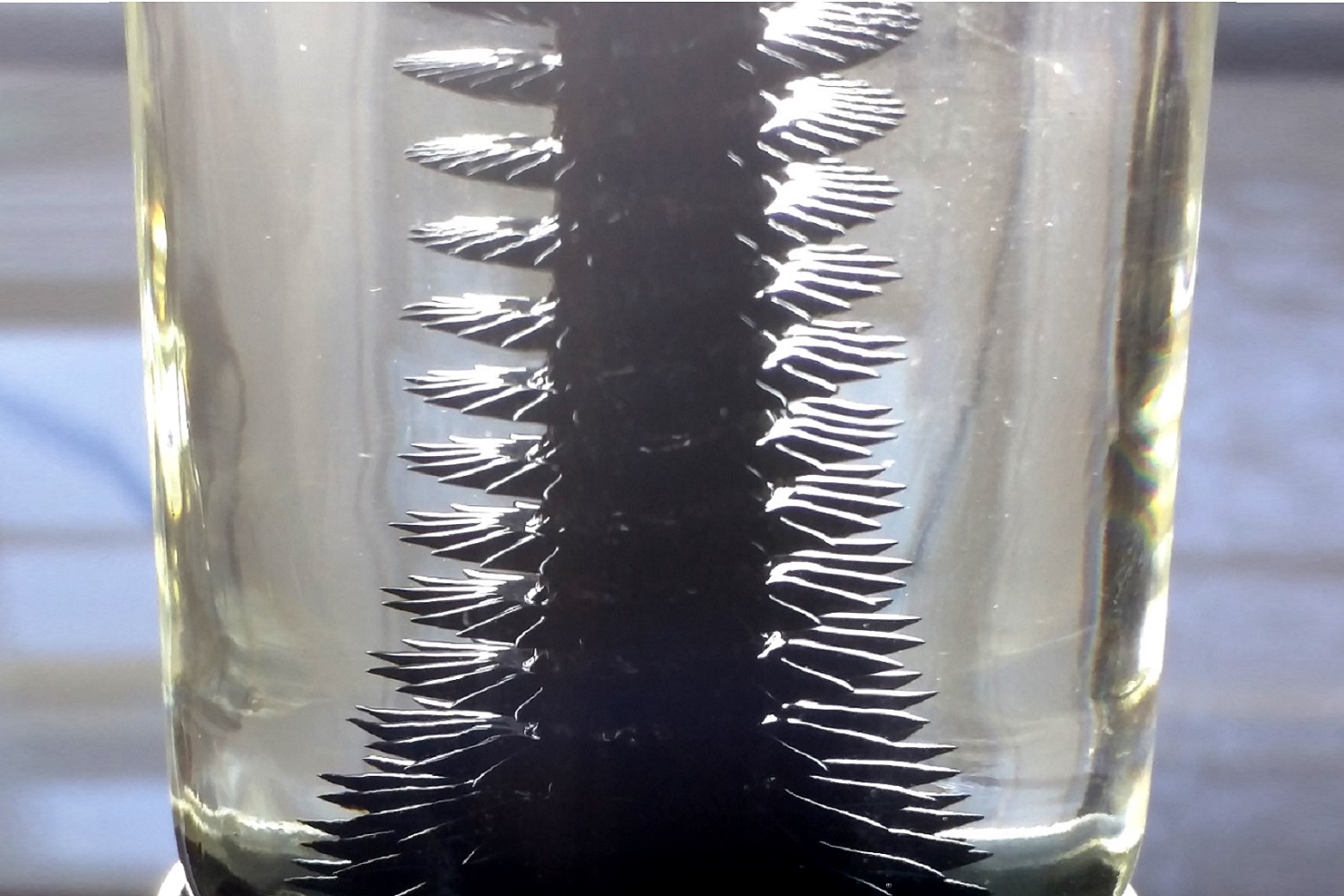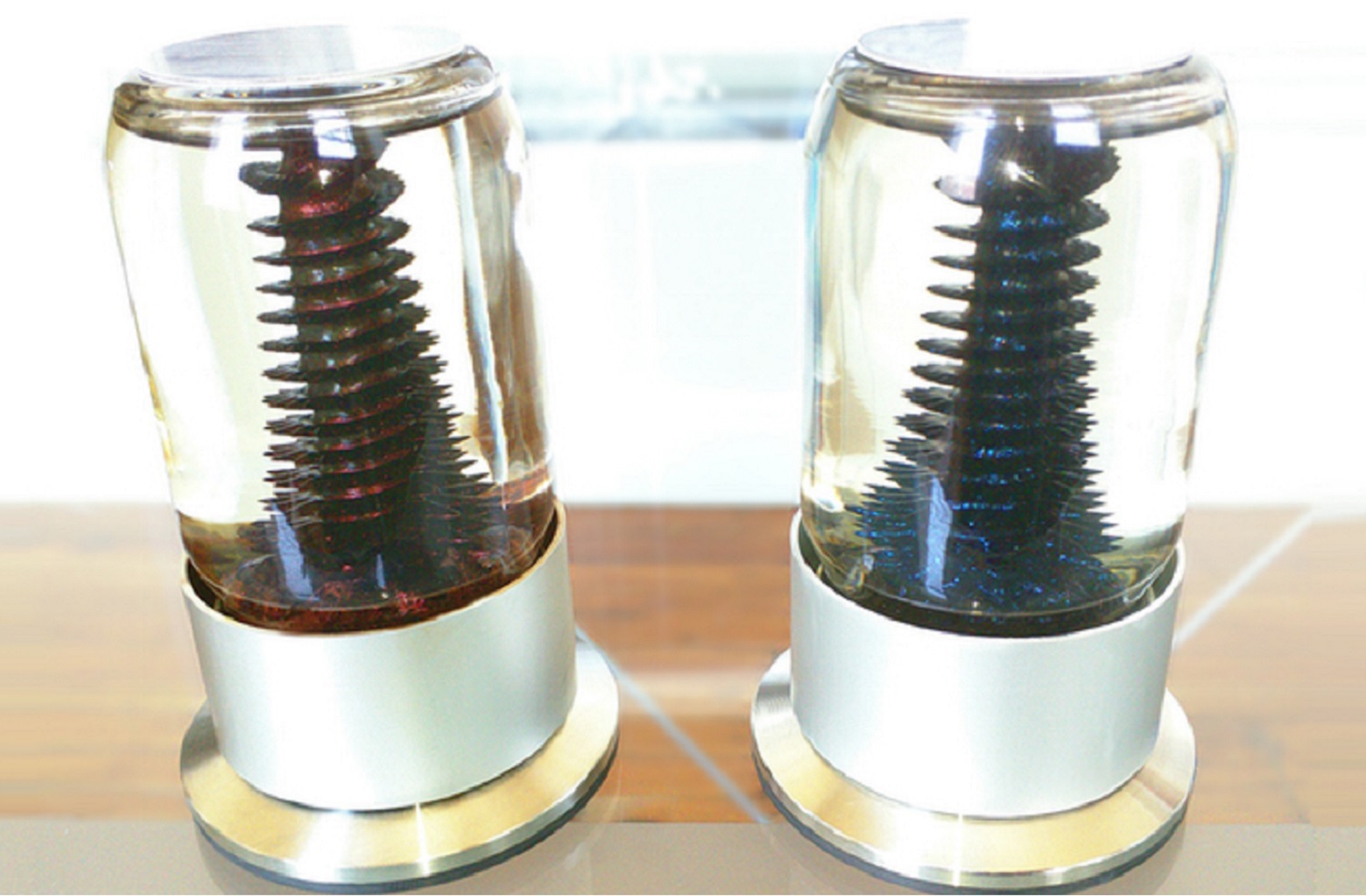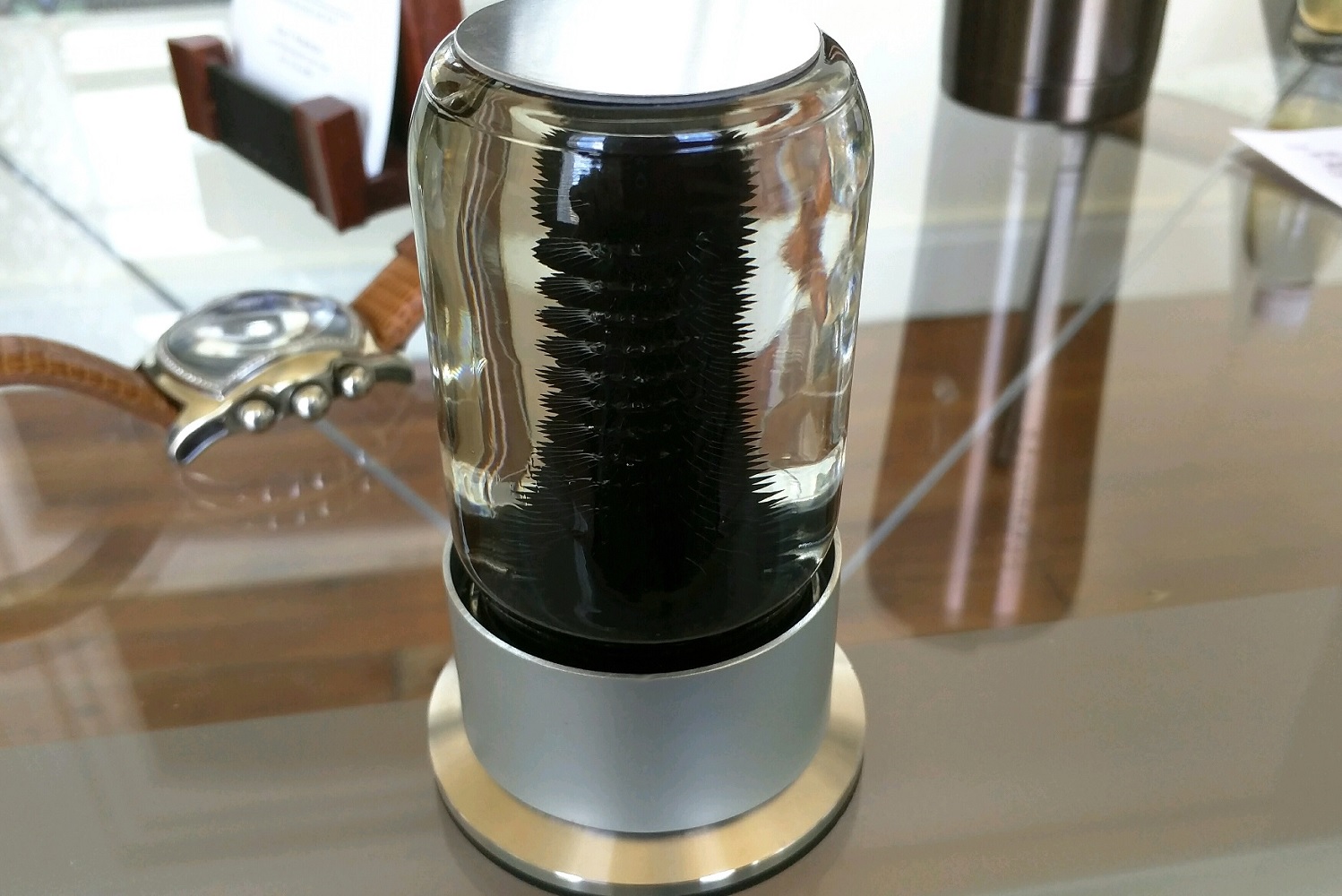Having launched as a Kickstarter campaign with the modest goal of racking up $7,000 in pledges, the so-called Rize Spinning Ferrofluid Display has now attracted almost 900 backers — and a total haul of $120,142 at time of writing. There’s still time for you to get involved.
“My background is in engineering, but my hobby and passion is creating art,” creator Matt Robison told Digital Trends. “I wanted to make a really nice-looking piece that would look great on any desk. I think it’s something that would be cool to show people, or just to get you thinking if you’re sat at your computer for a long time. You look at it and it’s just a really mesmerizing effect. It’s a fun art piece.”
For those unfamiliar with the amazing properties of ferrofluid, it refers to a strange black substance developed by NASA for use as a prototype rocket fuel. Ferrofluid was originally made by mixing RP-1 rocket fuel — a substance similar to kerosene — with magnetite particles, so that magnetic forces could pull the fuel into the rocket engines in zero gravity.
To create his extraterrestrial-appearing masterpiece, Robison decided to come up with a way to show off these unique abilities to maximum visual impact. To activate Rize, users place the sculpture onto its magnetic base, which has the effect of magnetizing the giant screw in the center of the sculpture and causing the ferrofluid to spin around it hypnotically.
Robison’s aim was to build something eye-catching, and it would be hard to deny he’s achieved that ambition — with flying colors. The Kickstarter campaign ends later this week, but if you still want to lend your support, you can purchase a finished unit for a pledge of $120 or more.
“I’m ordering the parts as soon as the Kickstarter campaign is over,” he told us. “As soon as they come in, I’ll start putting the finished units together. My plan is to get the ones for early backers out before Christmas. That’s the goal — and I’ll be working as fast as I can.”
